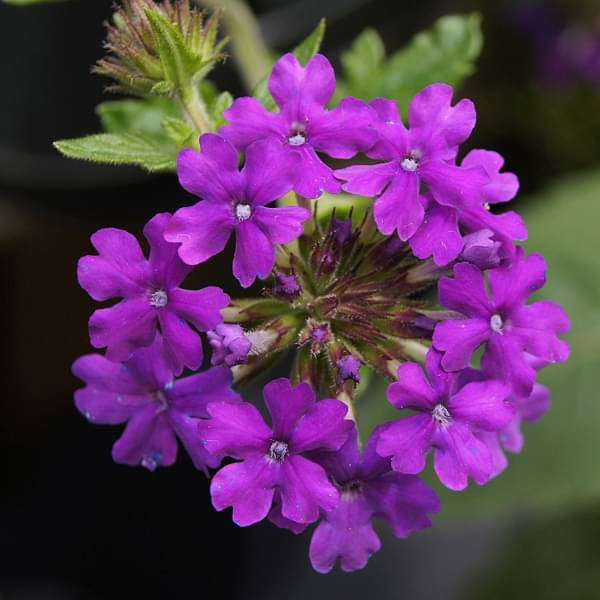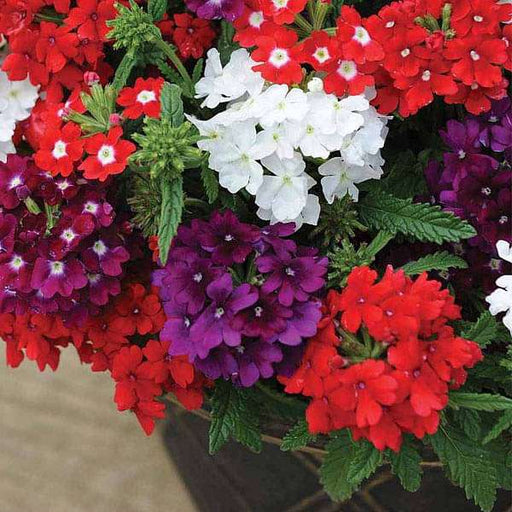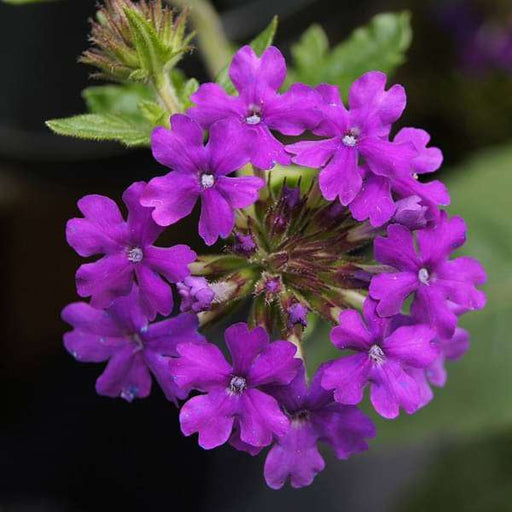Verbena plant
The Verbena plant is a beautiful flowering plant that produces clusters of vibrant, colorful blooms. It is easy to grow and can be used in a variety of garden settings.
Purple Verbena
Purple Verbena is a popular variety of Verbena that produces stunning clusters of deep purple blooms. It is a favorite among gardeners for its long-lasting blooms and easy care.
White Verbena
White Verbena is a classic variety of Verbena that produces pure white clusters of flowers. It is a versatile plant that can be used in a variety of garden settings.
Red Verbena
Red Verbena is a striking variety of Verbena that produces bright red clusters of flowers. It is a popular choice for adding a pop of color to garden beds and borders.
Verbena bonariensis
Verbena bonariensis is a tall and elegant variety of Verbena that produces clusters of purple blooms atop tall, slender stems. It is a favorite among gardeners for its unique and striking appearance.
Verbena hybrid
Verbena hybrid is a type of Verbena that is created by crossing two or more different varieties. It can produce a wide range of colors and flower shapes, making it a popular choice for gardeners.
Lemon Verbena
Lemon Verbena is a fragrant herb that is often used in cooking and for its medicinal properties. It produces clusters of small white flowers and has a fresh lemony scent.
Verbena rigida
Verbena rigida is a low-growing variety of Verbena that produces clusters of vibrant purple blooms. It is a hardy and easy-to-grow plant that is perfect for rock gardens and borders.
Blue Verbena
Blue Verbena is a stunning variety of Verbena that produces clusters of blue-violet flowers. It is a popular choice for adding a touch of cool color to garden beds and borders.
Verbena canadensis
Verbena canadensis is a low-growing variety of Verbena that is native to North America. It produces clusters of pink, purple, or white blooms and is a favorite among gardeners for its hardiness and easy care.
Tall Verbena
Tall Verbena is a variety of Verbena that can grow up to 6 feet tall. It produces clusters of pink, purple, or white blooms and is a popular choice for creating a bold statement in the garden.
Verbena hastata
Verbena hastata is a tall and elegant variety of Verbena that produces clusters of lavender-blue flowers. It is a favorite among gardeners for its striking appearance and easy care.
Dwarf Verbena
Dwarf Verbena is a low-growing variety of Verbena that produces clusters of small blooms in a range of colors. It is a popular choice for containers and small garden spaces.
Verbena tenuisecta
Verbena tenuisecta is a low-growing variety of Verbena that produces clusters of small pink, purple, or white flowers. It is a hardy and easy-to-grow plant that is perfect for rock gardens and borders.
Brazilian Verbena
Brazilian Verbena is a tall and elegant variety of Verbena that produces clusters of purple or pink blooms. It is a favorite among gardeners for its unique and exotic appearance.
Verbena peruviana
Verbena peruviana is a low-growing variety of Verbena that produces clusters of small pink or purple flowers. It is a hardy and easy-to-grow plant that is perfect for borders and rock gardens.
Verbena venosa
Verbena venosa is a low-growing variety of Verbena that produces clusters of small pink, purple, or white flowers. It is a popular choice for edging and groundcovers.
Verbena lanai
Verbena lanai is a compact and bushy variety of Verbena that produces clusters of pink, purple, or white blooms. It is a popular choice for hanging baskets and container gardens.
Verbena alba
Verbena alba is a variety of Verbena that produces pure white clusters of flowers. It is a versatile plant that can be used in a variety of garden settings.
Verbena hybrida
Verbena hybrida is a type of Verbena that is created by crossing two or more different varieties. It can produce a wide range of colors and flower shapes, making it a popular choice for gardeners.











































